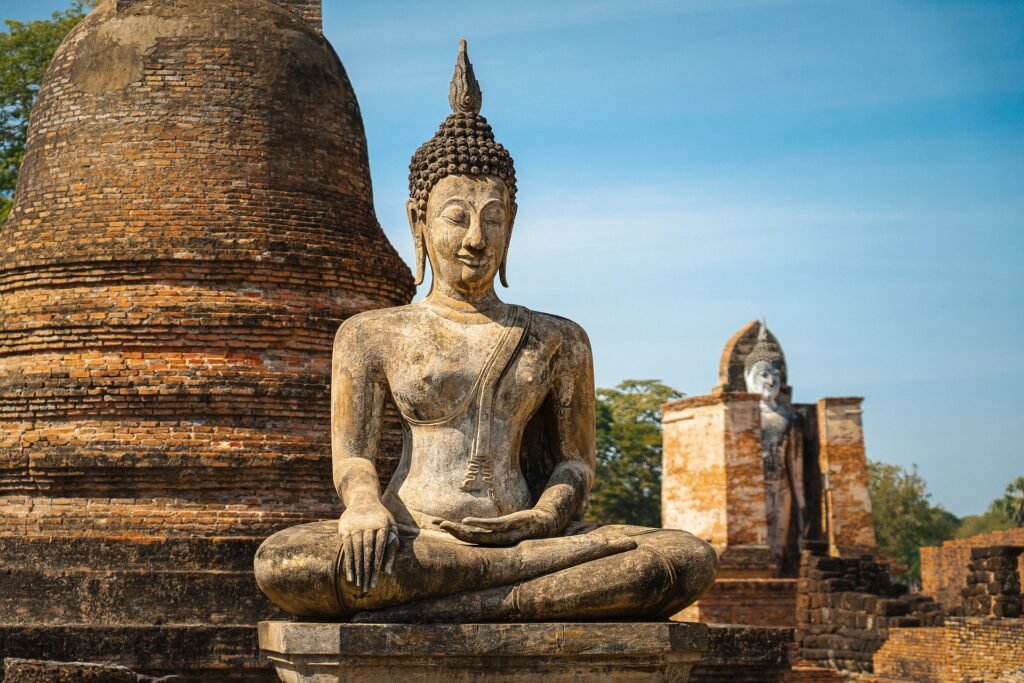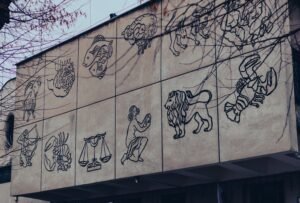Walk into a home, garden, or temple, and you might encounter a serene Buddha statue. But these figures are more than just decorative items; they are rich tapestries of symbolism, each posture, hand gesture, and feature telling a story and conveying profound Buddha statue meanings. Ever wondered why one Buddha is reclining while another touches the earth? Or what the specific hand gestures, known as mudras, signify?
Understanding these different images of Buddha can deepen your appreciation for Buddhist philosophy and help you choose a statue that resonates with your personal journey or intention. This guide will explain the symbolism behind common Buddha statues, exploring their poses, mudras, and other significant features.
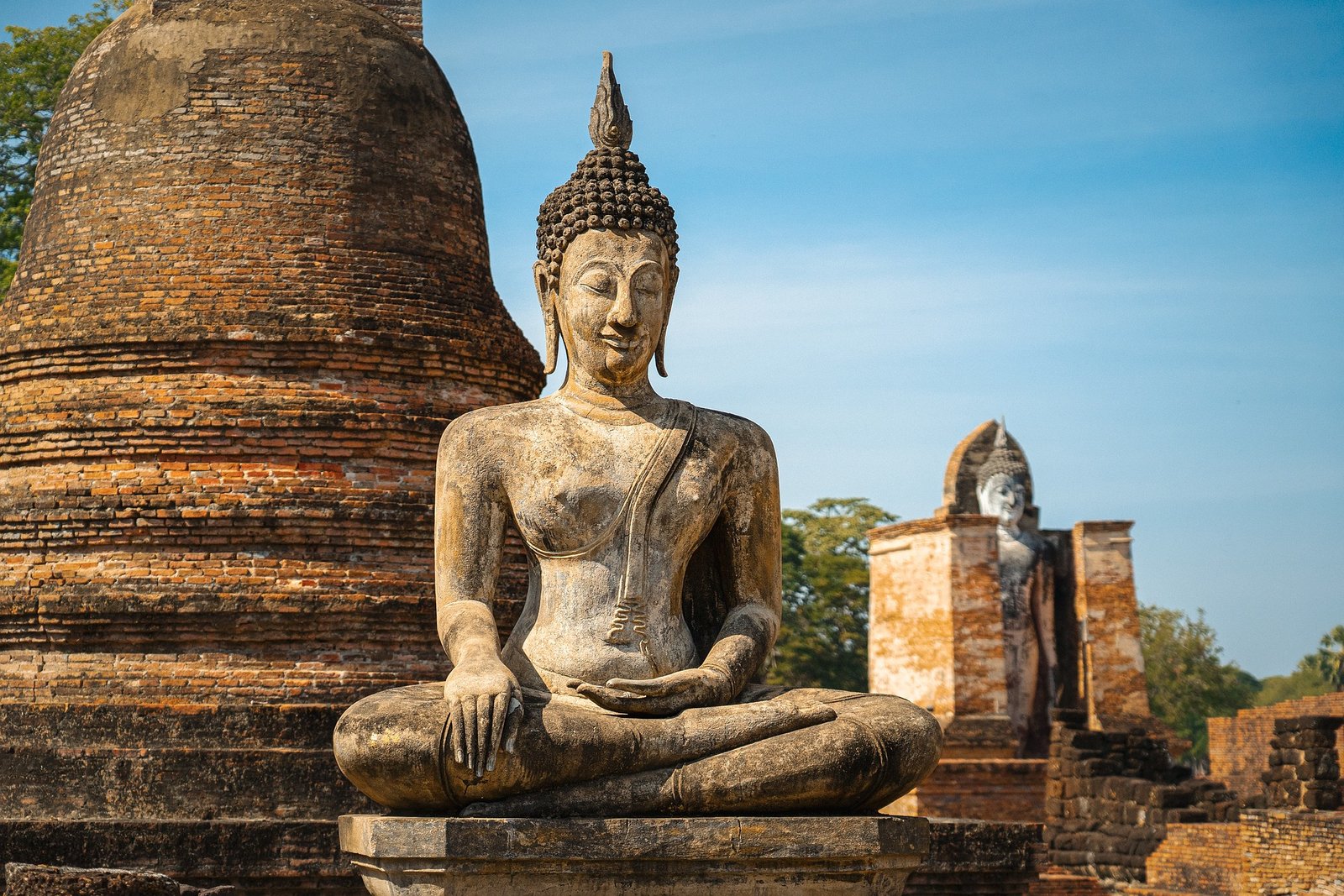
Table of Contents
Why Do Buddha Statues Look Different?
Buddha statues depict Siddhartha Gautama, the historical Buddha, or sometimes other Buddhas and Bodhisattvas. The variations arise from different artistic traditions across Asia (Thai, Tibetan, Chinese, Japanese, Indian, etc.) and the desire to represent different moments in the Buddha’s life, his teachings, or specific qualities like compassion, protection, or enlightenment. Each element is carefully chosen to convey a specific spiritual message.
Common Buddha Postures (Asanas) and Their Meanings
The way the Buddha is positioned speaks volumes. Here are some of the most common postures:
1. Sitting Buddha (Meditation Pose)
This is perhaps the most recognized pose, often depicted in full lotus (Padmasana) or half-lotus.
- Meaning: Represents meditation, concentration, stability, and the path to enlightenment. It often depicts the Buddha during his moment of enlightenment under the Bodhi tree.
- Symbolism: Calmness, focus, spiritual awakening. Ideal for meditation spaces.
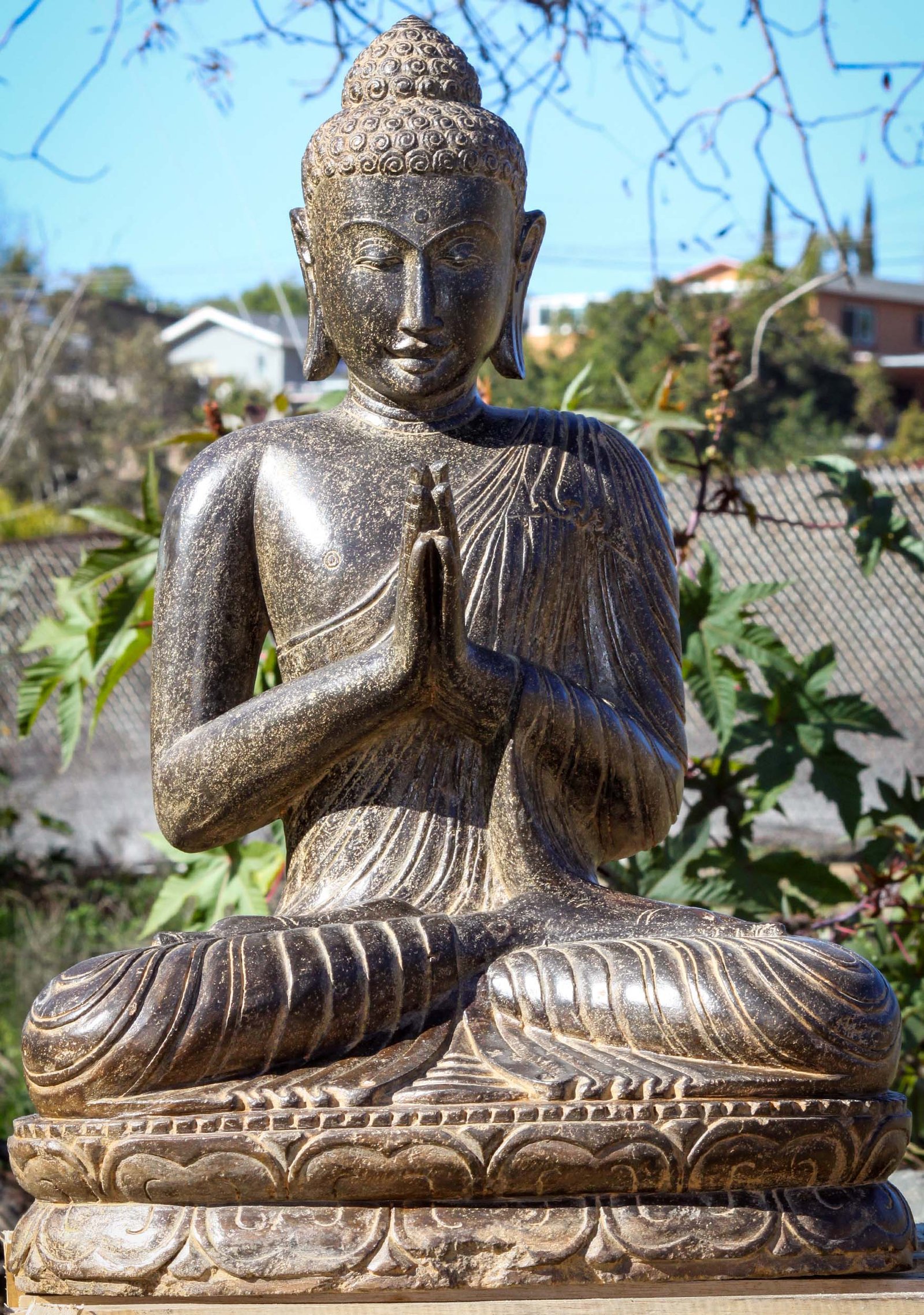
2. Standing Buddha
A standing Buddha can convey different meanings depending on the accompanying mudra.
- Meaning: Often signifies the Buddha rising to teach after reaching enlightenment or returning from heaven. It can represent steadfastness and determination.
- Symbolism: Readiness to act, teaching, blessing, reassurance.

3. Reclining Buddha

This statue depicts the Buddha lying on his right side, head supported by his hand or a cushion.
Symbolism: Ultimate peace, tranquility, detachment from worldly desires, the culmination of the spiritual journey.
Meaning: Represents the historical Buddha during his last moments on Earth, entering Parinirvana (Nirvana-after-death). It’s a state beyond enlightenment, free from the cycle of rebirth.
Decoding Buddha Mudras: The Language of Hand Gestures
As you delve deeper into the world of Buddha statues, you’ll quickly realize that the pose—or asana—along with the hand gestures—or mudras—aren’t random placements of limbs and digits. Instead, they’re intentional depictions imbued with profound spiritual meanings, specifically chosen to convey different aspects of the Buddha’s teachings. Let’s unfold the complex tapestry of poses and mudras, exploring their variations and interpretations.
Mudras are symbolic hand gestures used in Buddhist iconography to convey specific meanings and energies. Here are some key Buddha hand gestures explained:
1. Bhumisparsha Mudra (Earth-Touching Gesture)
- Description: Right hand rests on the right knee, fingers pointing downwards, touching the earth. Left hand rests in the lap, palm up.
- Meaning: “Calling the Earth to Witness.” Symbolizes the moment Buddha attained enlightenment, calling upon the Earth to witness his worthiness despite Mara’s temptations. Represents steadfastness, determination, and enlightenment.
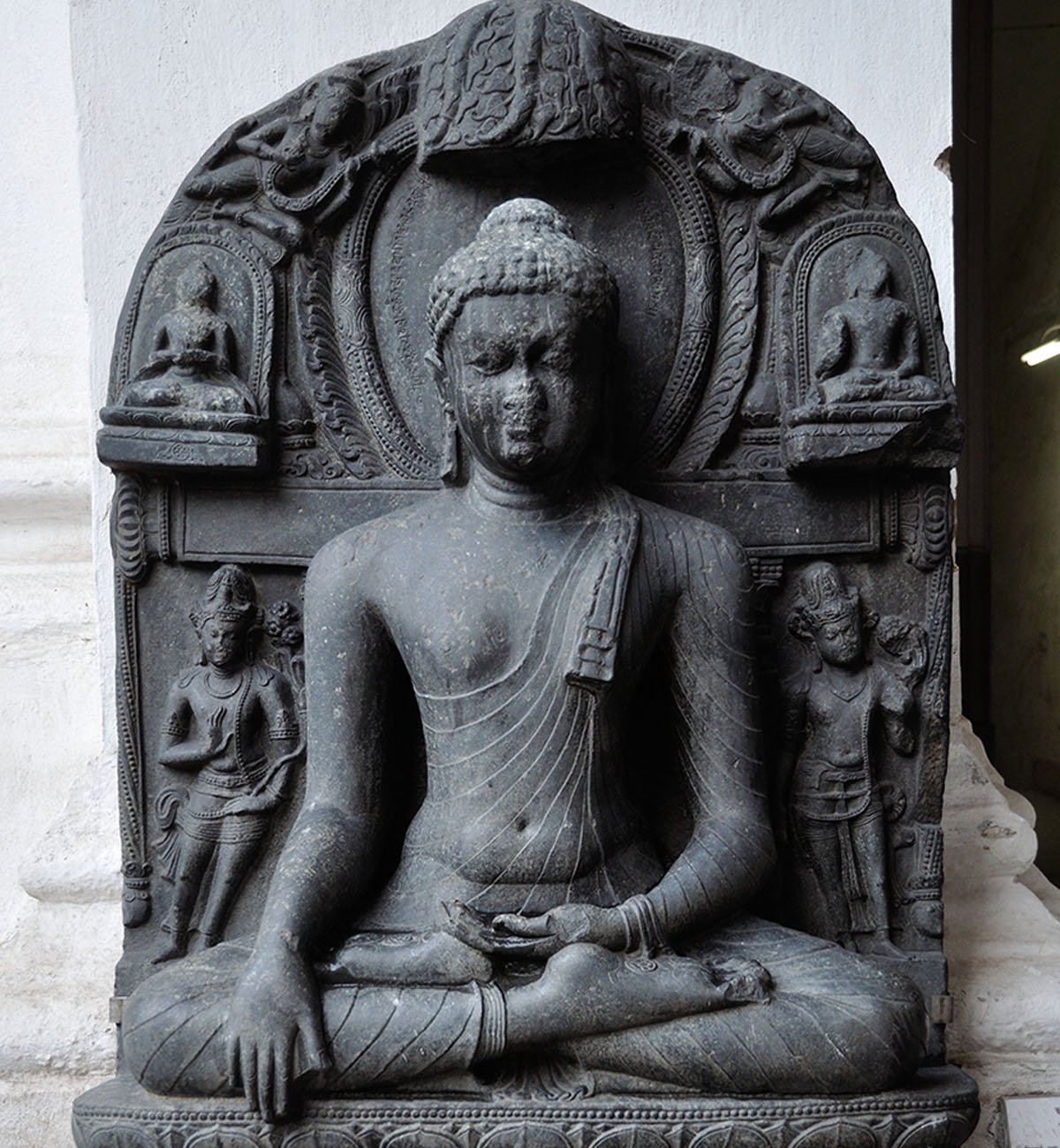
2. Dhyana Mudra (Meditation Gesture)
- Description: Both hands rest in the lap, right hand on top of the left, palms facing upwards, thumbs often touching to form a triangle.
- Meaning: The gesture of meditation, concentration, and spiritual wisdom. Represents inner balance and tranquility. Often seen with the sitting meditation pose.
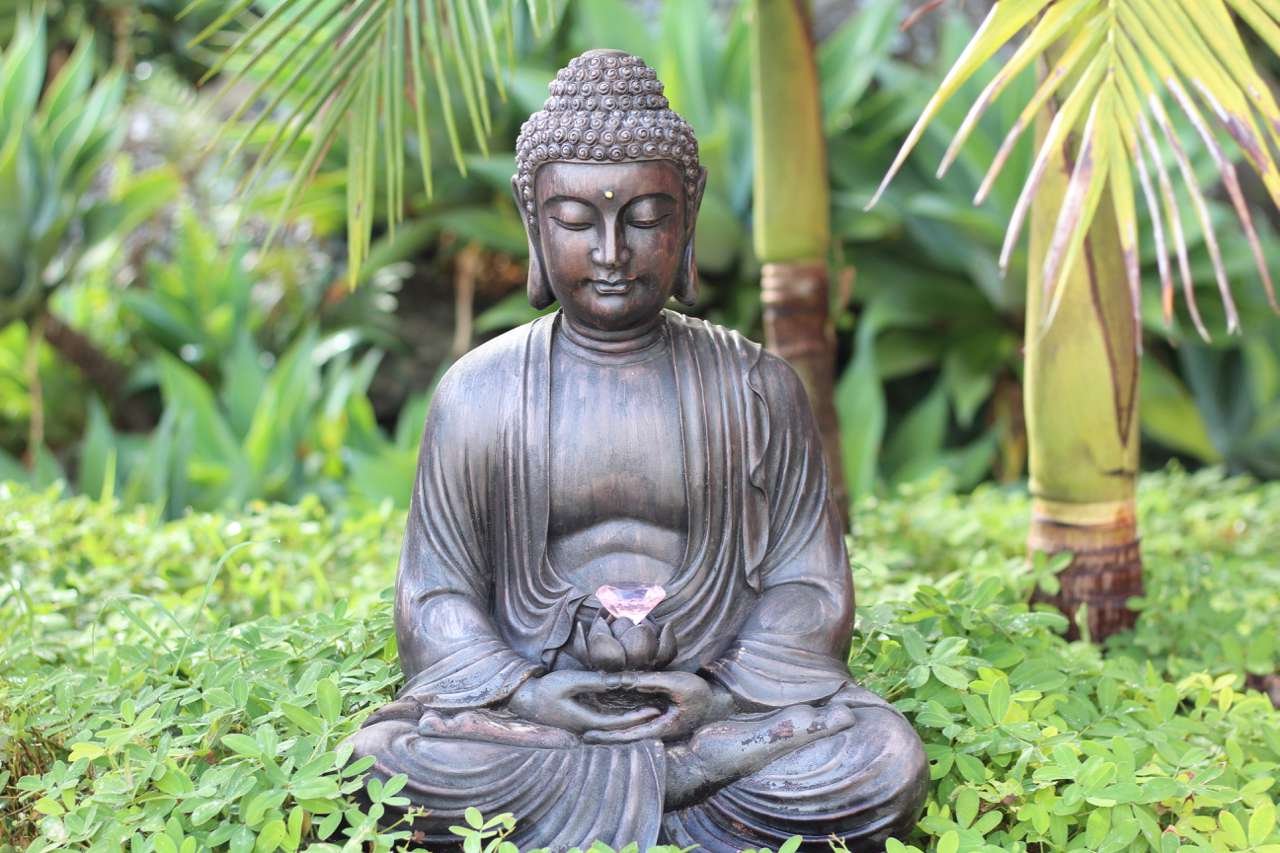
3. Abhaya Mudra (Fearlessness Gesture)
- Description: Right hand raised to shoulder height, arm bent, palm facing outwards, fingers pointing up.
- Meaning: “Fear not.” Offers protection, reassurance, peace, and the dispelling of fear. A gesture of blessing and benevolence.

4. Vitarka Mudra (Teaching Gesture)
- Description: Thumb and index finger of one hand (usually the right) touch, forming a circle. Other fingers point upwards. Palm often faces outwards.
- Meaning: Represents teaching, discussion, and the transmission of Buddhist dharma (teachings). The circle symbolizes the constant flow of energy and information.

5. Namaskara/Anjali Mudra (Greeting/Prayer Gesture)
- Description: Palms pressed together at chest level, fingers pointing upwards.
- Meaning: A gesture of greeting, prayer, respect, and adoration. Though more common with Bodhisattvas or devotees, it signifies reverence.

Other Symbolic Features of Buddha Statues
Beyond posture and mudras, other features hold meaning:
- Ushnisha: The protuberance on top of the Buddha’s head symbolizes his expanded wisdom and attainment of enlightenment.
- Urna: A dot or curl of hair between the eyebrows, representing the third eye of spiritual vision and insight.
- Long Earlobes: Reminder of Siddhartha’s princely past when he wore heavy earrings. Renouncing them signifies detachment from material wealth and worldly concerns.
- Smiling Face (e.g., Laughing Buddha): While the historical Buddha is often serene, the popular “Laughing Buddha” (Budai) is a different figure, a Chinese folkloric deity symbolizing happiness, abundance, and good fortune.
Choosing and Placing Your Buddha Statue
When selecting a Buddha statue, consider which Buddha statue meaning resonates most with you.
- For peace and meditation: A Sitting Buddha with Dhyana Mudra.
- For protection and overcoming fear: A Standing or Sitting Buddha with Abhaya Mudra.
- For wisdom and enlightenment: A Sitting Buddha with Bhumisparsha Mudra.
- For happiness and prosperity: A Laughing Buddha statue.
Placement Tips:
- Place the statue in a respectful, clean area.
- Elevate it off the floor.
- Avoid placing it directly on the floor, in bathrooms, or bedrooms (though personal meditation corners in bedrooms are common).
- Ideally, face the statue towards the entrance of a room or facing east. Read this Buddhist etiquette guide to learn more about Buddhist etiquette.
Embracing the Symbolism
Understanding the different images of Buddha statues transforms them from mere objects into powerful symbols of peace, wisdom, and the potential for spiritual growth within us all. Each statue serves as a reminder of the path to enlightenment and the qualities needed to walk it.
Whether you are a practicing Buddhist, appreciate spiritual art, or simply seek a symbol of tranquility for your space, knowing the Buddha statue meanings enriches the connection.
(Call to Action): Which Buddha statue or mudra meaning resonates most with you? Share your thoughts in the comments below!



